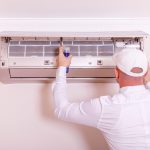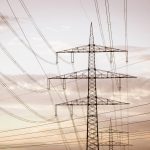In an increasingly energy-dependent world, homeowners have grown accustomed to uninterrupted access to power. We will explore why installing a backup generator is no longer a luxury reserved for emergencies but a practical safeguard against the unexpected. Power outages, whether caused by severe weather, grid overload, or utility maintenance, can happen without warning and last from minutes to days. These interruptions disrupt comfort and safety—especially for families relying on medical equipment, refrigerated medications, or remote work setups. A backup generator automatically restores power to essential circuits, minimizing disruption and protecting daily routines. It ensures that heating or cooling systems remain functional, sump pumps continue to prevent basement flooding, and appliances stay operational. With more unpredictable weather patterns and aging utility infrastructure, the reliability of a secondary power source provides more than just convenience—it offers resilience. Installing one means regaining control when external systems falter.
A Safety Net When the Grid Fails
- Choosing the Right System for Your Needs
For larger properties or homes with extensive power needs, a Kohler Industrial Generator from Bay City Electric Works offers robust, scalable performance to keep everything running smoothly without compromise. Some homeowners prefer portable generators for short-term use, while others opt for permanent standby systems that connect directly to the home’s electrical panel. Standby generators automatically detect when power is lost and engage within seconds, making them ideal for seamless transitions. These systems often run on natural gas or propane and can power selected circuits or the entire home. The choice depends on lifestyle, budget, and how much independence you want during an outage. A technician typically begins by evaluating your home’s energy load and then recommends a generator that meets those needs without overextending capacity. For example, a household that only wants to power basic lighting, refrigeration, and internet service will require a much smaller unit than one that expects to simultaneously run HVAC, kitchen appliances, and laundry machines. Companies like Wells Electric Service help homeowners navigate these decisions, ensuring practicality and code compliance. Matching the right system with your power needs is key to long-term satisfaction.
- Installation Involves More Than Plugging In
Installing a backup generator involves more than setting it in place and turning it on. Permanent systems must be appropriately positioned to meet zoning and clearance requirements for safety and ventilation. Generators produce exhaust and heat, so proximity to windows or vents must be carefully measured. Electrical panels must have transfer switches that direct power flow when the generator activates and disconnect it safely when the main utility returns. Plumbing connections are necessary for natural gas or propane systems, and in some cases, new lines must be installed or upgraded to accommodate fuel demand. This integration requires coordination between licensed electricians, plumbers, and sometimes local utility companies. Once connected, the system must be tested under load to confirm that it activates correctly and supports the expected circuits. It’s also a good opportunity for homeowners to learn how the unit functions, what maintenance it requires, and how to recognize warning signs if something goes wrong. This setup is a long-term investment in home infrastructure, and when done correctly, it provides years of reliable service.
- Backup Power Supports More Than Just Lights
While lights and refrigerators are essential, backup power can mean much more depending on your household’s unique needs. In today’s connected homes, uninterrupted internet and cell charging are often necessary for communication during a storm or outage. Home offices depend on routers, modems, and computers; in some households, security systems are fully dependent on constant power. Keeping water pumps, alarms, and sump systems operational for properties in rural or flood-prone areas can prevent costly damage. Likewise, homes with electric ranges, garage doors, or HVAC systems need power to maintain comfort and access. Having a generator that supports more than just lighting means maintaining the normalcy of daily life even when the grid fails. It also reduces the need to leave home during unsafe conditions simply to access basic services. As more homes integrate smart thermostats, surveillance systems, and remote controls for appliances, maintaining full electrical functionality during outages becomes increasingly apparent.
- Maintaining Your Generator for Long-Term Reliability
Once a backup generator is installed, it’s essential not to forget it until the next storm hits. Regular maintenance ensures the unit starts reliably and performs as intended during a power loss. Most standby generators perform automatic self-tests every week, but owners should still schedule periodic inspections to check fuel levels, oil conditions, air filters, and battery life. Keeping the area around the generator clear of debris and foliage is also essential to allow proper ventilation. Depending on usage and manufacturer recommendations, oil changes, part replacements, and software updates may be required to maintain performance. Like a vehicle, neglecting maintenance may lead to failure exactly when the unit is most needed. A simple service plan with a qualified technician can handle these tasks and provide reminders or diagnostics to prevent surprises. When properly cared for, generators often last 10 to 20 years, providing long-term peace of mind and uninterrupted comfort during any outage.
Power loss may be unpredictable, but your response doesn’t have to be. A backup generator equips your home with the ability to function independently of utility interruptions, protecting everything from your refrigerator to your furnace and your peace of mind. Proper selection, installation, and maintenance make it a reliable part of your household infrastructure—ready whenever you need it. As weather patterns grow more intense and our reliance on technology deepens, the ability to maintain power during an outage becomes a practical necessity, not just a luxury. Whether you’re safeguarding a family, supporting remote work, or simply aiming to avoid the inconvenience of darkness, installing a generator is an investment in continuity and comfort. It’s one of those upgrades you’ll rarely think about—until it saves you from days of discomfort and disruption.







